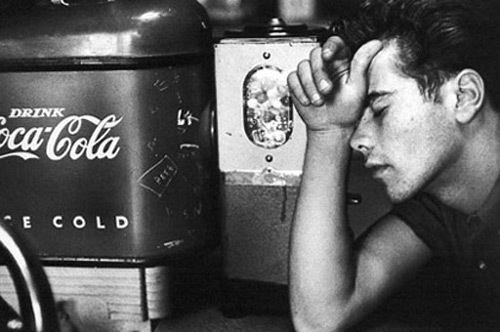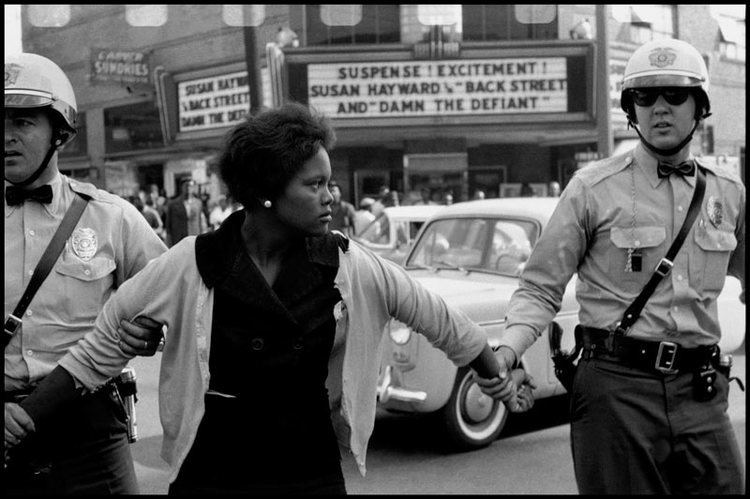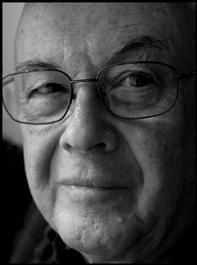Occupation Photographer Name Bruce Davidson | Role Photographer Ex-spouse Emily Davidson | |
 | ||
Notable work Brooklyn Gang, The Dwarf, East 100th Street, Subway Movies Isaac Singer's Nightmare and Mrs. Pupko's Beard, Jab Jab Books Brooklyn gang, England/ Scotland - 1960, Isaac Bashevis Singer an, Bruce Davidson Photographs, Bruce Davidson: England Similar People Cheryl Dunn, Isaac Bashevis Singer, Bruce Davison, Harold Eugene Edgerton, Larry Burrows | ||
Bruce davidson a lifetime with leica
Bruce Davidson (born September 5, 1933) is an American photographer. He has been a member of the Magnum Photos agency since 1958. His photographs, notably those taken in Harlem, New York City, have been widely exhibited and published. He is known for photographing communities usually hostile to outsiders.
Contents
- Bruce davidson a lifetime with leica
- Photographer bruce davidson on his recent series nature of los angeles the new yorker
- Life and work
- Publications
- References

Photographer bruce davidson on his recent series nature of los angeles the new yorker
Life and work

Davidson was born on September 5, 1933 in Oak Park, Illinois. At age 10, his mother built him a darkroom in their basement and Davidson began taking photographs. Soon after, he approached a local photographer who taught him the technical nuances of photography, in addition to lighting and printing skills. His artistic influences included Robert Frank, Eugene Smith, and Henri Cartier-Bresson.

At 19, Davidson won his first national recognition for his photography, the 1952 Kodak National High School Photographic Award, for a picture of an owl. After he graduated from high school, Davidson attended the Rochester Institute of Technology and Yale University, where one of his teachers was artist Josef Albers. Davidson showed Albers a box of prints of alcoholics on Skid Row; Albers told him to throw out his "sentimental" work and join his class in drawing and color. For his college thesis, Davidson created a photo essay that was published in Life in 1955, documenting the emotions of football players behind the scenes of the game.

Following college, Davidson was drafted into the US Army, where he served in the Signal Corps at Fort Huachuca, Arizona, attached to the post's photo pool. Initially, he was given routine photo assignments. Undaunted, Davidson created out of seemingly mundane material unique photo studies. An editor of the post's newspaper, recognizing his talents, asked that he be permanently assigned to the post newspaper. There, given a certain degree of autonomy, he was allowed to further hone his talents. Later, stationed in Paris, he met Henri Cartier-Bresson, a later colleague with the Magnum photo agency, sharing his portfolio and receiving advice from Cartier-Bresson. While in France, Davidson produced a photo essay on the Widow of Montmartre, an old Parisian woman.

After his military service, in 1957, Davidson worked briefly as a freelance photographer, before joining Magnum the following year. During the following few years he most notably produced Brooklyn Gang and The Dwarf. From 1961 to 1965, Davidson produced one of his most famous bodies of work as he chronicled the events and effects of the Civil Rights Movement around the country, in both the north and the south. In support of his project, Davidson received a Guggenheim Fellowship in 1962, and the project was displayed at the Museum of Modern Art in New York. Upon the completion of his documentation of the Civil Rights Movement, Davidson received the first ever photography grant from the National Endowment for the Arts.
Davidson’s next project, published in 1970 as East 100th Street—a two-year documentation of a conspicuously poverty-stricken block in East Harlem—is perhaps his most famous. This project was also displayed at the Museum of Modern Art. Davidson followed this with Subway, a classic portrayal of the New York City Subway system, in the late 1970s. Using color, Davidson documented a gritty and lively urban underworld. Over a decade later, in the early 1990s, Davidson completed a four-year exploration of Central Park, showing it as a beautiful and grand homage to New York City.
In 1998, Davidson returned to East 100th Street to document the revitalization, renewal and changes that occurred in the 30 years since he last documented it. For this visit, he presented a community slide show and received an Open Society Institute Individual Fellowship Award.
Davidson has directed two award-winning short films, a documentary titled Living off the Land and a more surreal tale titled Isaac Singer’s Nightmare and Mrs. Pupko’s Beard.
An image from his Brooklyn Gang series was used as the cover for Bob Dylan's 2009 album Together Through Life.
Davidson received the Outstanding Contribution to Photography Award at the 2011 Sony World Photography Awards.
He continues to work as an editorial photographer.
